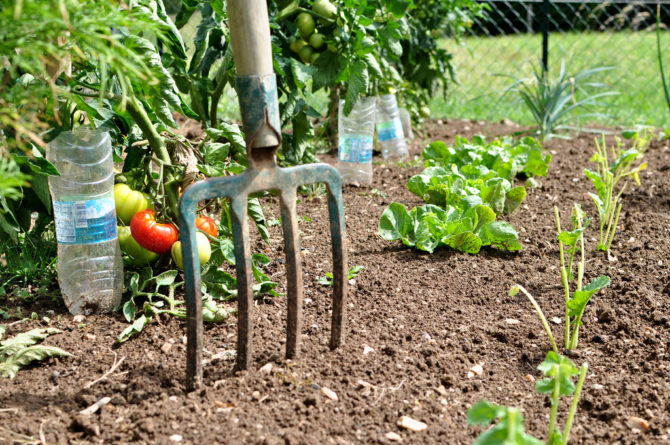Grow your own vegetables in France


Few experiences can match the pleasure of savouring your own home-grown vegetables. The process is almost magical, especially when raised from a seed or seedling. The flavour and the texture far exceeds anything you can buy in a shop. Growing vegetables in France is also a pleasurable activity in its own right, giving you an excuse to spend time outdoors. It is not necessary to have a large space to begin a vegetable garden; in fact you do not even need a garden. You can choose to grow in containers or a raised bed.
The technique of raised garden beds has come down to us from the Middle Ages so that disease would spread less rapidly. Monks and peasants cultivated plants in the raised beds system. Of course, another considerable advantage of the raised garden bed is that the soil is not as low down for the gardener! The raised kitchen garden bed can be purchased in a modular kit form or made from untreated railway sleepers. A simple plastic tarpaulin as the base forms enough protection from invasive weeds.
Getting Started
Growing vegetables does not have to be difficult or time-consuming, especially if you follow the advice in this guide. Experience really is the best teacher, you will soon discover.
Three critical elements are needed to grow good vegetables:
1. Sunshine
Choose a spot that gets at least 6 hours per day.
2. Water
The closer your garden is to a source of water, the better. You can also install a water harvesting system and economize on your water bill.
3. Good soil
Something between rock-hard clay and loose sand. Correcting poor soil, fortunately, is not hard.Placing your kitchen garden close to the house will mean less walking to harvest your vegetables, but it will put a premium on keeping the garden neat and tidy. Wherever you decide to put your garden, start small. A well-tended 3m x 3m garden will produce much more than a weed-infested kitchen garden three times the size. The ideal size for your kitchen garden will become clear as you work though the planning process described here. Plants cultivated as vegetables fall into 4 distinct family groups, which can be a helpful indicator of the growing conditions they prefer. Grow your vegetables according to plant families and you’ll find you have only four cultivation groups to deal with. By moving them around you will master the art of crop rotation.
Deciding What to Grow
It is tempting to try growing a large variety of vegetables. A better approach for an inexperienced vegetable gardener is to consider what you most like to eat, and then narrow the list down to the easiest and most productive varieties. Some of the vegetables that will meet this test include tomatoes, lettuce, radishes, peppers, snow peas, onions, squash, and green beans.
Some vegetables may not make the list: Corn (too much room, too few ears), asparagus (requires waiting a couple of years for the first harvest), and green peas (growing season too limited). Garden catalogues are a really good source of ideas to choose which vegetables to grow. Once you narrow your choices to types of vegetables, pick two or three varieties that seem promising. Growing more than one variety will give you some insurance if one does not perform well in your type of soil.
Next year, grow the best performer again, and choose a different one to experiment with. When selecting varieties, pay close attention to the description. Some varieties produce smaller plants that are ideal for small gardens or containers. It is always advisable to look for varieties that are described as disease resistant.
Follow these basic ground rules and you will harvest the results in no time at all!
•With thanks to Elaine Jarvis, Garden Designer
www.jardinjarvis.com
Photo-Frédérique Voisin-Demery via Flickr
Share to: Facebook Twitter LinkedIn Email
More in activity, courses, family, garden, guides, Removals, work
By FrenchEntrée
Leave a reply
Your email address will not be published. Required fields are marked *




REPLY
REPLY